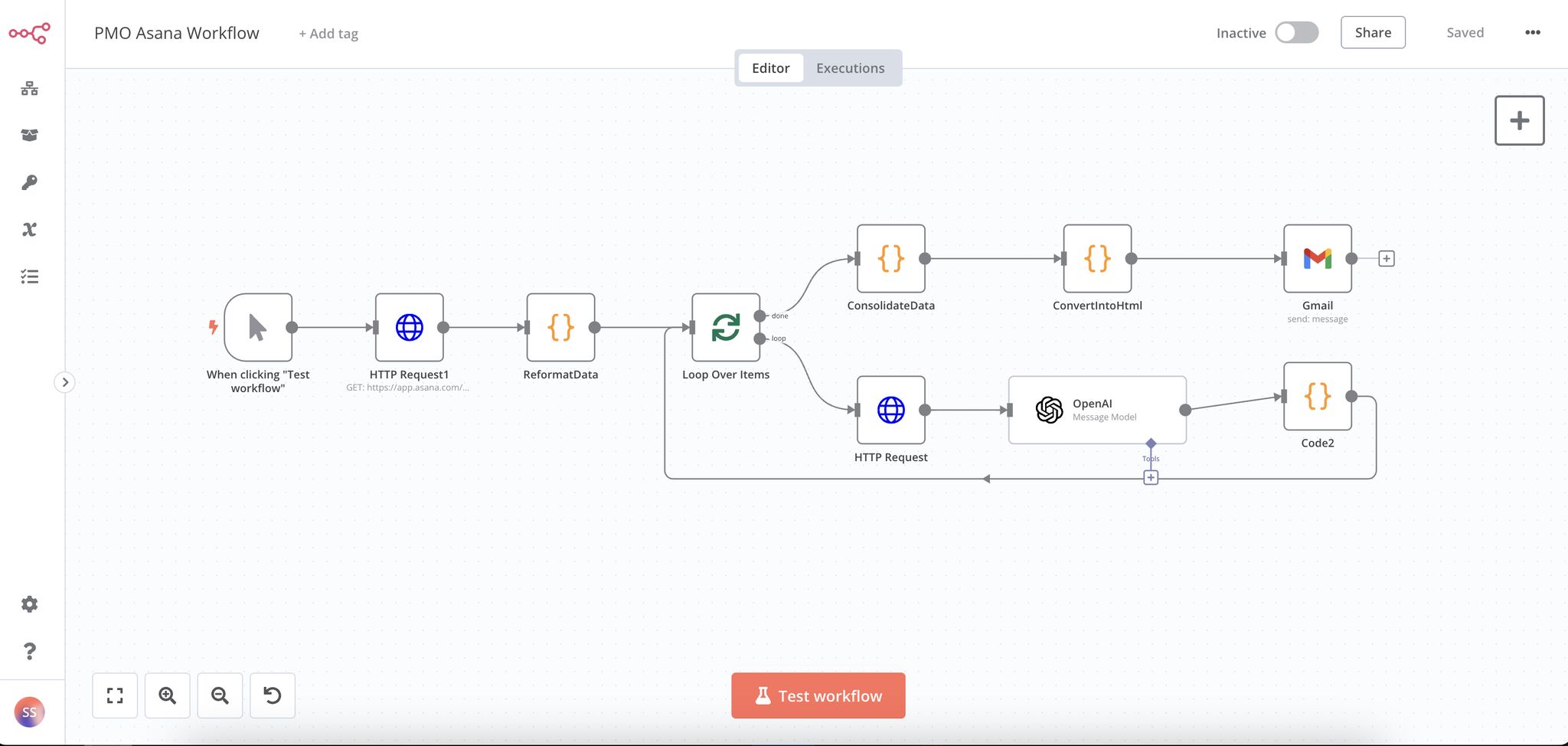Automating PMO Meetings With n8n Automation
The preps for PMO Meetings can take a lot of time. Here's how you can automate the process with n8n automation and cut the prep time into half.
Join the DZone community and get the full member experience.
Join For FreeIn today's world data and time are two of the most valuable things. The power of data is always in the news, but what about time? There are a ton of operations that are still being done manually which can easily be automated. Today, I am going to talk about one of those manual tasks that take an eternity to be completed.
Yes, I am talking about the prep for PMO meetings. But you may ask: how can you automate it? Well, here is how I did it using n8n automation.
Before jumping on to the main topic, let me give you a short review of n8n for the people who have heard this word for the first time.
A Short Review of n8n
With the help of n8n, a potent low-code automation tool that is open-source, you may establish workflows between several programs. You can transfer data between tools, automate tedious activities, and set off events on a variety of platforms with n8n. The versatility of n8n is what distinguishes it from other automation solutions; being self-hosted and open-source, it allows you to modify workflows to suit your specific requirements while maintaining ownership over your data.
Now let’s move on to our main topic. Let’s talk about PMO meetings for a minute. These meetings play a vital role in any organization's success as they review the progress of all ongoing projects, make critical decisions, and ensure everything’s moving in the right direction.
However, the prep for these meetings takes hours. The reason for that is that we have to manually collect updates from Asana and Jira, pull reports, and spend way too much time organizing it all into something digestible which is surely a headache, and more importantly, a huge time drain.
Thus, I came up with a better way to do it. Here is where I came up with my n8n automation. With a few workflows, I was able to automate a large chunk of this process. Let me walk you through how I did it.
Step 1: Automating Data Collection
The first thing I did was set up n8n to connect with our project management tools — Asana and Jira. This was crucial because we needed to gather real-time updates on all projects before our meetings. With n8n, I created a workflow that pulls the latest updates from both tools an hour before our PMO meetings. Instead of manually checking each project, n8n takes care of it for me, ensuring the data is always fresh and ready to go.
Step 2: Summarizing the Data
Once n8n pulls the data, the next challenge is making sense of it. I didn’t want raw data; I wanted something quick and easy to digest. So, I integrated OpenAI into the workflow. The AI helps summarize the project updates, organizing everything into a clean, tabular format. This way, we can quickly see which projects are on track, which ones need attention, and what actions the team has committed to. The key here is that it cuts out the fluff and focuses on the essentials.
Step 3: Automating the Report Delivery
Now that I had a summarized report, the next step was to ensure everyone got it before the meeting. n8n made this easy as well. I set up a workflow that sends the report out via email or Slack, depending on who’s on the distribution list. An hour before each PMO meeting, the report is automatically delivered to everyone who needs it, giving them time to review it and come to the meeting prepared.

The Outcome
The results of this automation were immediate. What used to take over an hour to prepare now takes less than 45 minutes. The data is more accurate, and the format is easier to understand, so we spend less time sifting through information and more time making decisions. It’s a small change in the grand scheme of things, but it’s made a big impact on our efficiency.
n8n, in this case, wasn’t just about saving time — it transformed how we approached our PMO meetings. With less manual work to do, the meetings have become more focused, and we’re better equipped to tackle issues head-on. It’s the kind of change that makes you wonder why you didn’t do it sooner.
Final Thoughts
For me, this is just the beginning of what we can do with n8n. The flexibility of the tool means we can automate not just simple workflows but complex, multi-step processes that involve multiple systems. Whether you’re running a startup or a large enterprise, tools like n8n are becoming essential in driving efficiency and letting teams focus on what they do best — solving problems, not managing processes.
If you’re looking for ways to improve your workflows, give n8n a try.
Opinions expressed by DZone contributors are their own.

Comments